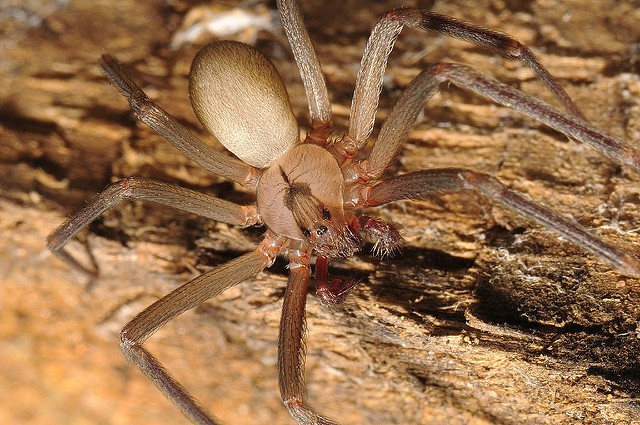Here are five tips from a research team at Kansas State University’s Department of Entomology. Recluse spiders, while not exactly our friends, can be avoided. You don’t bother them and they won’t bother you!
1. Brown recluse spiders are found outdoors in the U.S. Midwest, as well as inside structures. They tend to thrive in the same environments that humans do.
2. Brown recluse spiders are venomous, but bites do not always result in large, necrotic lesions where surrounding tissue dies. Often, the bite goes unnoticed and only results in a pimple-like swelling. However, some people develop a necrotic wound (with blood and pus) which is slow to heal, with the potential for a secondary infection. If you know you’ve been bitten, catch the spider if safely possible, and show it to medical personnel for clear identification.
3. They readily feed on prey that is dead, so are attracted to recently killed insects. However, they can and will also attack live prey.
4. Brown recluses build small, irregular webs in out-of-the-way places but do not use these to capture prey. They tend to hide in the dark and move around at night searching for prey.
5. A brown recluse is tiny when it first emerges from the egg case and takes several molts to reach adulthood, 6-12 months. Remember, they are only active from March to October so this may take one to two years.
There are five more tips and facts you can check out at Earth Sky.
March through October are usually the most prevalent time to see a recluse spider and they are most prevalent in the areas around Iowa, Illinois and Indiana! Oh, and if you live in Ohio you might want to watch out for them there too!
In essence, avoid them if you can!
Featured Image via Flickr

Alyssa
Mitch Murphy
2 times Iv been bit
This whole article did not say one thing about how not to get bitten. This information pretty much says they live where we live and it sucks to get bitten. At least they said venomous and not poisonous.
If I have to click next page it’s click bait.
I turned away after it asked me to click on more pages
I’ve been bit before too